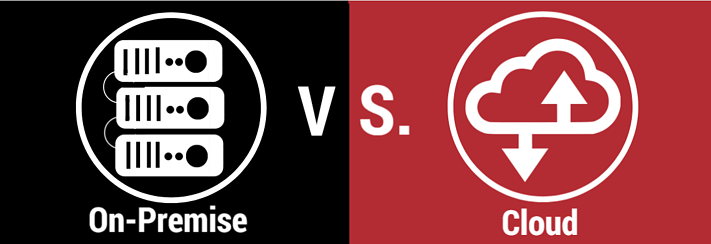On-premise vs. cloud-based tire software. Which is right for your business?

When it comes to software management, tire dealers and auto repair shops now have two options: You can either purchase a new on-premise software system or a cloud solution. While the temptation may be to keep everything in-house because it offers more security, the cloud offers greater flexibility and easier implementation.
The right choice depends on the nature of the business and future plans for growth. Here are five questions to consider.
1. What are the costs involved?A one-stop purchase of tire management software may seem like it will cost less than an annual cloud subscription, but think again. Tire shop management software purchase may require purchasing new hardware, servers, infrastructure, and an in-house IT team. Cloud systems have their own costs involved. Delivery is through either the Software-as-a-Service (SaaS) model, which involves the client paying for modules while renting the overall system, or the Platform-as-a-Service (PaaS) model, which requires the software provider to manage all infrastructure, upgrades, security etc. These models tend to be good for small-to-mid-sized companies that want to keep costs down and the flexibility to easily change providers if the software fails to perform.
2. Which system has greater mobility?
Cloud-based systems offer easy access to real-time data and information by allowing access by multiple users, unlimited storage, and greater mobility no matter the device or location. Whereas on-premise software is far less mobile, but it can offer similar mobility depending on a greater investment in additional services and tools.
3. Which system has greater security?
For obvious reasons, you don’t want important financial information leaked outside your firewalls. With the on-premise model, there is no need to entrust your important financials to a web-based software provider, plus the hardware resides in your location, not anywhere else. The cloud-based model is considered more comprehensive because it looks after the infrastructure in real-time to detect potential security problems and recovery is done automatically by the service provider.
4. Which system is easier to maintain?
The cloud-based model is, far and away, the best for software for upgrades because they take place seamlessly in real-time over multiple locations. The cloud-model ensures that every user, no matter their location, is working on the most advanced version of the software. Additionally, the speed of the upgrade is swift, compared to on-site systems that require physical installation that can take a prolonged amount of time.
5. Which system is faster to deploy?
Cloud-based systems are already implemented, so they can be up and running immediately across multiple locations or business units, opposed to the on-premise model which requires deployment over a longer period of time.
Which system do you use? Which one are you considering for the future? In the comments below, tell us about your experience and share some tips.